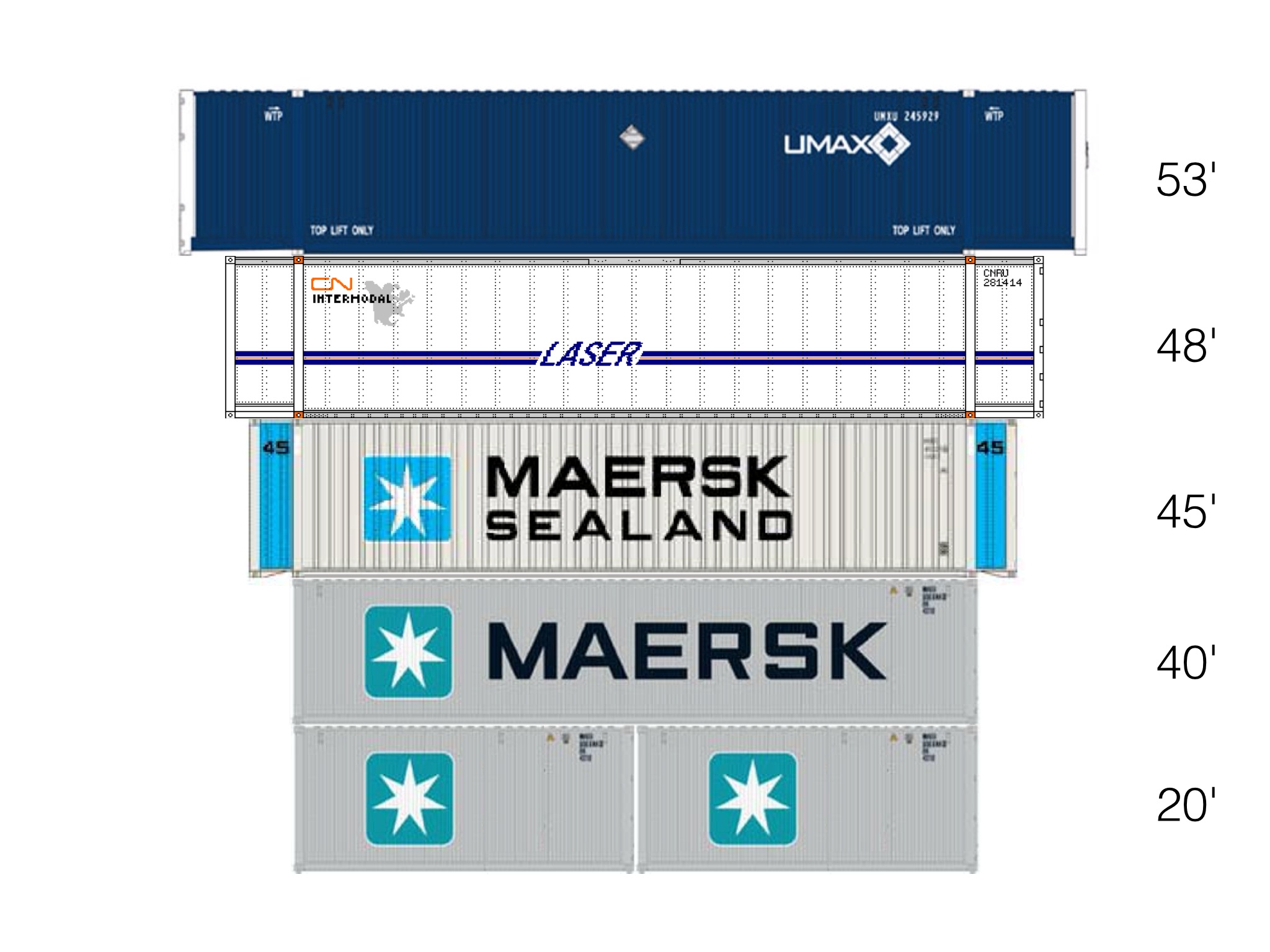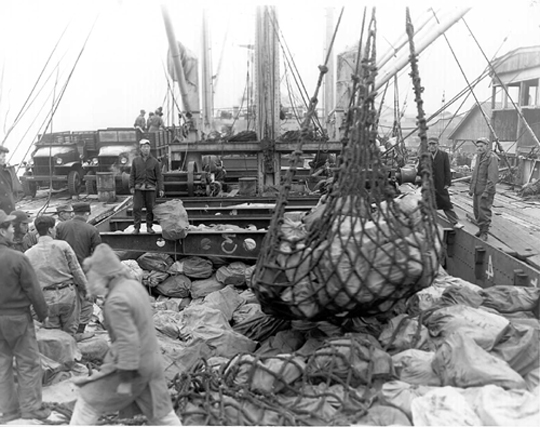|
Twistlock
A twistlock or twist lock, together with matching corner castings, as defined in norms including ISO 1161:1984, form a standardized (rotating) connector system, for connecting and securing intermodal, and predominantly ISO-standard international shipping containers. The primary uses are to securely ''stack'' containers, for locking them into place on a container ship, semi-trailer or rail carriage, and for lifting and handling by specific container-handling equipment, like straddle carriers, reach stackers, container-handling forklifts, sidelifters, and various types of container cranes. Twist-locks also have to be used when stacking shorter than 40-foot containers, together with 40foot (12.2 m) and longer containers. Shorter than 40foot containers must be joined together horizontally with twist-locks, to form a rigid combined whole of 40foot length, to make them stackable and be able to support and be supported by an ISO standard 40- or 45foot container stacked u ... [...More Info...] [...Related Items...] OR: [Wikipedia] [Google] [Baidu] |
Intermodal Container
An intermodal container, often called a shipping container, is a large standardized shipping container, designed and built for intermodal freight transport, meaning these containers can be used across different modes of transport – from ship to rail to truck – without unloading and reloading their cargo. Intermodal containers are primarily used to store and transport materials and products efficiently and securely in the global containerized intermodal freight transport system, but smaller numbers are in regional use as well. These containers are known under a number of names. Based on size alone, up to 95% of intermodal containers comply with ISO standards, and can officially be called ISO containers. Many other names are simply: container, cargo or freight container, shipping, sea or ocean container, container van or sea van, sea can or C can, or MILVAN, SEAVAN, or RO/RO. The also used term CONEX (Box) is technically incorrect carry-over usage of the name of an import ... [...More Info...] [...Related Items...] OR: [Wikipedia] [Google] [Baidu] |
Container Chassis
Container chassis, also called intermodal chassis or skeletal trailer, is a type of semi-trailer designed to securely carry an intermodal container. Chassis are used by truckers to deliver containers between ports, railyards, container depots, and shipper facilities. This type of trucking is sometimes called drayage. Operation A container is lifted onto a chassis by a specialized crane, ensuring that the container's corner castings line up with the chassis’ twistlocks (pins). The container is locked to the chassis by engaging the pins. The length of a chassis determines which container length it can accept. For example, a 40-foot-long chassis is used for a 40-foot-long container. Some chassis can be extended or shortened depending on which container needs to be hauled. Chassis have a kingpin so they can be connected to a semi-tractor. They also have a pair of legs called landing gear that can be cranked down to park them when not hooked up to a tractor. Portable g ... [...More Info...] [...Related Items...] OR: [Wikipedia] [Google] [Baidu] |
ISO 668
ISO 668 - Series 1 freight containers — Classification, dimensions and ratings is an ISO international standard which classifies intermodal freight shipping containers ''nominally'', and standardizes their sizes, measurements and weight specifications. The current version of the standard is the Seventh edition (2020), which integrates version ''E''. The standard was prepared by Technical Committee ISO/TC 104: Freight containers, Subcommittee SC 1: General purpose containers. Introduced in 1968, ISO 668 currently regulates both external and internal dimensions of containers, as well as the minimum door opening sizes, where applicable. Minimum internal dimensions were earlier defined by ISO standard 1894:'' 'General purpose series 1 freight containers – Minimum internal dimensions'.'' Its second edition appeared in 1979, but was withdrawn, once revised by ISO 14961 of 1990. ISO 14961's current version is 2013, including Amendment 1 of 2016, last reviewed ... [...More Info...] [...Related Items...] OR: [Wikipedia] [Google] [Baidu] |
Container Ship
A container ship (also called boxship or spelled containership) is a cargo ship that carries all of its load in truck-size intermodal containers, in a technique called containerization. Container ships are a common means of commercial intermodal freight transport and now carry most seagoing non-bulk cargo. Container ship capacity is measured in twenty-foot equivalent units (TEU). Typical loads are a mix of 20-foot (1-TEU) and 40-foot (2-TEU) ISO-standard containers, with the latter predominant. Today, about 90% of non- bulk cargo worldwide is transported by container ships, and the largest modern container ships can carry up to 24,000 TEU (e.g., '' Ever Ace''). Container ships now rival crude oil tankers and bulk carriers as the largest commercial seaborne vessels. History There are two main types of dry cargo: bulk cargo and break bulk cargo. Bulk cargoes, like grain or coal, are transported unpackaged in the hull of the ship, generally in large volume. Break-bu ... [...More Info...] [...Related Items...] OR: [Wikipedia] [Google] [Baidu] |
Container Crane
A container crane (also container handling gantry crane or ship-to-shore crane) is a type of large dockside gantry crane found at container terminals for loading and unloading intermodal containers from container ships. Container cranes consist of a supporting framework that can traverse the length of a quay or yard on a rail track. Instead of a hook, they are equipped with a specialized handling tool called a spreader. The spreader can be lowered on top of a container and locks onto the container's four locking points ("corner castings") using a twistlock mechanism. Cranes normally transport a single container at once, but some newer cranes have the capability to pick up two to four 20-foot containers at once. Types There are two common types of container handling gantry crane: ''high profile,'' where the boom is hinged at the waterside of the crane structure and lifted in the air to clear the ships for navigation, and ''low profile,'' where the boom is shuttled toward and ... [...More Info...] [...Related Items...] OR: [Wikipedia] [Google] [Baidu] |
Double-stack Rail Transport
Double-stack rail transport is a form of intermodal freight transport in which railroad cars carry two layers of intermodal containers. Invented in the United States in 1984, it is now being used for nearly seventy percent of United States intermodal shipments. Using double stack technology, a freight train of a given length can carry roughly twice as many containers, sharply reducing transport costs per container. On United States railroads special well cars are used for double-stack shipment to reduce the needed vertical clearance and to lower the center of gravity of a loaded car. In addition, the well car design reduces damage in transit and provides greater cargo security by cradling the lower containers so their doors cannot be opened. A succession of larger container sizes have been introduced to further increase shipping productivity in the United States. Double-stack rail operations are growing in other parts of the world, but are often constrained by clearance and ot ... [...More Info...] [...Related Items...] OR: [Wikipedia] [Google] [Baidu] |
Container Verriegelung 2
A container is any receptacle or enclosure for holding a product used in storage, packaging, and transportation, including shipping. Things kept inside of a container are protected on several sides by being inside of its structure. The term is most frequently applied to devices made from materials that are durable and are often partly or completely rigid. A container can also be considered as a basic tool, consisting of any device creating a partially or fully enclosed space that can be used to contain, store, and transport objects or materials. History Humans have used containers for at least 100,000 years, and possibly for millions of years.Clive Gamble, ''Origins and Revolutions: Human Identity in Earliest Prehistory'' (2007), p. 204. The first containers were probably invented for storing food, allowing early humans to preserve more of their food for a longer time, to carry it more easily, and also to protect it from other animals. The development of food storage con ... [...More Info...] [...Related Items...] OR: [Wikipedia] [Google] [Baidu] |
International Standard
international standard is a technical standard developed by one or more international standards organization, standards organizations. International standards are available for consideration and use worldwide. The most prominent such organization is the International Organization for Standardization (ISO). Other prominent international standards organizations including the International Telecommunication Union (ITU) and the International Electrotechnical Commission (IEC). Together, these three organizations have formed the World Standards Cooperation alliance. Purpose International standards may be used either by direct application or by a process of modifying an international standard to suit local conditions. Adopting international standards results in creating national standards that are equivalent, or substantially the same as international standards in technical content, but may have (i) editorial differences as to appearance, use of symbols and measurement units, substitution ... [...More Info...] [...Related Items...] OR: [Wikipedia] [Google] [Baidu] |
How The Shipping Container Made The World Smaller And The World Economy Bigger
How may refer to: * How (greeting), a word used in some misrepresentations of Native American/First Nations speech * How, an interrogative word in English grammar Art and entertainment Literature * ''How'' (book), a 2007 book by Dov Seidman * ''HOW'' (magazine), a magazine for graphic designers * H.O.W. Journal, an American art and literary journal Music * "How", a song by The Cranberries from ''Everybody Else Is Doing It, So Why Can't We?'' * "How", a song by Maroon 5 from ''Hands All Over'' * "How", a song by Regina Spektor from ''What We Saw from the Cheap Seats'' * "How", a song by Daughter from ''Not to Disappear'' * "How?" (song), by John Lennon Other media * HOW (graffiti artist), Raoul Perre, New York graffiti muralist * ''How'' (TV series), a British children's television show * ''How'' (video game), a platform game People * How (surname) * HOW (graffiti artist), Raoul Perre, New York graffiti muralist Places * How, Cumbria, England * How, Wiscon ... [...More Info...] [...Related Items...] OR: [Wikipedia] [Google] [Baidu] |
New Zealand
New Zealand ( mi, Aotearoa ) is an island country in the southwestern Pacific Ocean. It consists of two main landmasses—the North Island () and the South Island ()—and over 700 List of islands of New Zealand, smaller islands. It is the List of island countries, sixth-largest island country by area, covering . New Zealand is about east of Australia across the Tasman Sea and south of the islands of New Caledonia, Fiji, and Tonga. The country's varied topography and sharp mountain peaks, including the Southern Alps, owe much to tectonic uplift and volcanic eruptions. New Zealand's Capital of New Zealand, capital city is Wellington, and its most populous city is Auckland. The islands of New Zealand were the last large habitable land to be settled by humans. Between about 1280 and 1350, Polynesians began to settle in the islands and then developed a distinctive Māori culture. In 1642, the Dutch explorer Abel Tasman became the first European to sight and record New Zealand. ... [...More Info...] [...Related Items...] OR: [Wikipedia] [Google] [Baidu] |
Ship Grounding
Ship grounding or ship stranding is the impact of a ship on seabed or waterway side. It may be intentional, as in beaching (nautical), beaching to land crew or cargo, and careening, for maintenance or repair, or unintentional, as in a marine accident. In accidental cases, it is commonly referred to as "running aground". When unintentional, grounding may result simply in stranding, with or without damage to the submerged part of the ship's hull. Breach of the hull may lead to significant flooding, which in the absence of containment in watertight bulkheads may substantially compromise the ship's structural integrity, stability, and safety. As hazard Severe grounding applies extreme loads upon ship structures. In less severe accidents, it might result only in damage to the hull; however, in most serious accidents, it might lead to hull breaches, cargo spills, total loss of the vessel, and, in the worst cases, human casualties. Grounding accounts for about one-third of commercia ... [...More Info...] [...Related Items...] OR: [Wikipedia] [Google] [Baidu] |


.jpg)






